JOURNAL OF INFORMATION SCIENCE THEORY AND PRACTICE
- P-ISSN2287-9099
- E-ISSN2287-4577
- SCOPUS, KCI
4권 2호

초록
Abstract
In the last few years, a new type of synchronous social networking services (SNSs) has emerged—social live streaming services (SLSSs). Studying SLSSs is a new and exciting research field in information science. What information behaviors do users of live streaming platforms exhibit? In our empirical study we analyzed information production behavior (i.e., broadcasting) as well as information reception behavior (watching streams and commenting on them). We conducted two quantitative investigations, namely an online survey with YouNow users (N = 123) and observations of live streams on YouNow (N = 434). YouNow is a service with video streams mostly made by adolescents for adolescents. YouNow users like to watch streams, to chat while watching, and to reward performers by using emoticons. While broadcasting, there is no anonymity (as in nearly all other WWW services). Synchronous SNSs remind us of the film The Truman Show, as anyone has the chance to consciously broadcast his or her own life real-time.

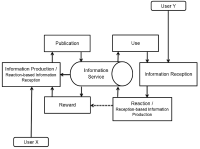














초록
Abstract
A sustainable development in science, innovation, and technology requires a balanced distribution of scientific wealth in sub-country regions. This paper addresses the issue of geographical distribution of scientific wealth and its goal is to offer a framework to describe and measure the share of provinces in national scientific wealth. Our proposed model divides the indicators of scientific wealth into two groups, production and the use of scientific wealth. To evaluate this model, the scientific wealth of Iran was studied using recorded data on IRANDOC databases. Rich, average, and poor provinces were identified and the results showed that 70% of the scientific wealth belongs to 20% of the provinces. The findings can facilitate planning for a sustainable science and technology policy.

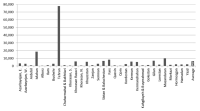



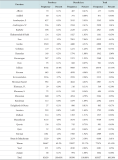
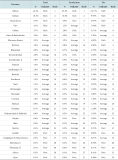

초록
Abstract
This study was designed to investigate organizational culture and emotional intelligence as predictors of job performance among library personnel in Edo state, Nigeria. The survey research design was employed for the study with a population size of 181 library personnel in the 15 academic libraries under study, and due to the manageable population size, total enumeration was adopted as the sampling technique. The questionnaire was used to elicit data from the respondents. Of the 181 copies of the questionnaire administered, 163 copies were retrieved and found valid for analysis constituting a 90% response rate. Four research questions and four null hypotheses (tested at 0.05 level of significance) were formulated to guide the study. The tool used to analyze the research question was descriptive statistics (percentage, mean, and standard deviation) and inferential statistics (correlation and multiple regression) for testing the hypotheses. The findings of the study revealed that there is a high level of job performance, good organizational culture, and high level of emotional intelligence among the personnel. Organizational culture and emotional intelligence jointly and significantly predict job performance of personnel. There is significant positive correlation between organizational culture and job performance. The linear combination of emotional intelligence and organizational culture predict job performance of library personnel in the academic libraries under study. The research concludes that there is a need for high job performance in libraries which is predicted by the organizational culture of the library and the level of emotional intelligence of the library personnel.

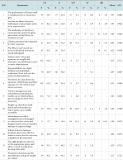






초록
Abstract
The authors in this paper aim to identify the growth of literature on Intellectual Property Rights (IPRs). The research publications on IPRs were downloaded from the Scopus online citation database and the authors found that there were 1,513,138 records contributed globally over a period of 10 years from 2005 to 2014. The distribution of publications based on the year, country, and document type were studied. Relative growth rate (RGR) of the publications and doubling time (Td) were calculated. Most productive organizations, source titles, and the productive authors on IPR research were studied. Most cited articles in the study area were identified. The results show that a number of publications under the subjects Medicine and Engineering were produced. The developed countries are very active in IPR research and producing publications. It is found that one institution which holds the sixth place among the top 10 most productive institutions belongs to Brazil, a developing country. Two developing countries such as China and India hold second and tenth positions respectively in the top 10 countries contributing literature on IPRs.

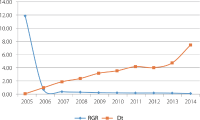
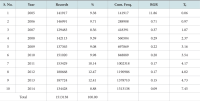
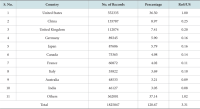

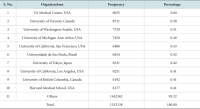



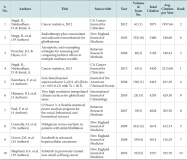
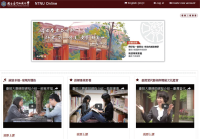
초록
Abstract
The convergence of libraries, archives, and museums (LAMs) has garnered attention in recent years. Extending the tendency further, National Taiwan Normal University (NTNU) fuses the library, archive, museum, and publisher (LAMP) functionality together in its library. This article elaborates on the LAMP practices of the NTNU Library, which indicates that without creating new units in a university, its library can play a good role of curating invaluable university assets.






